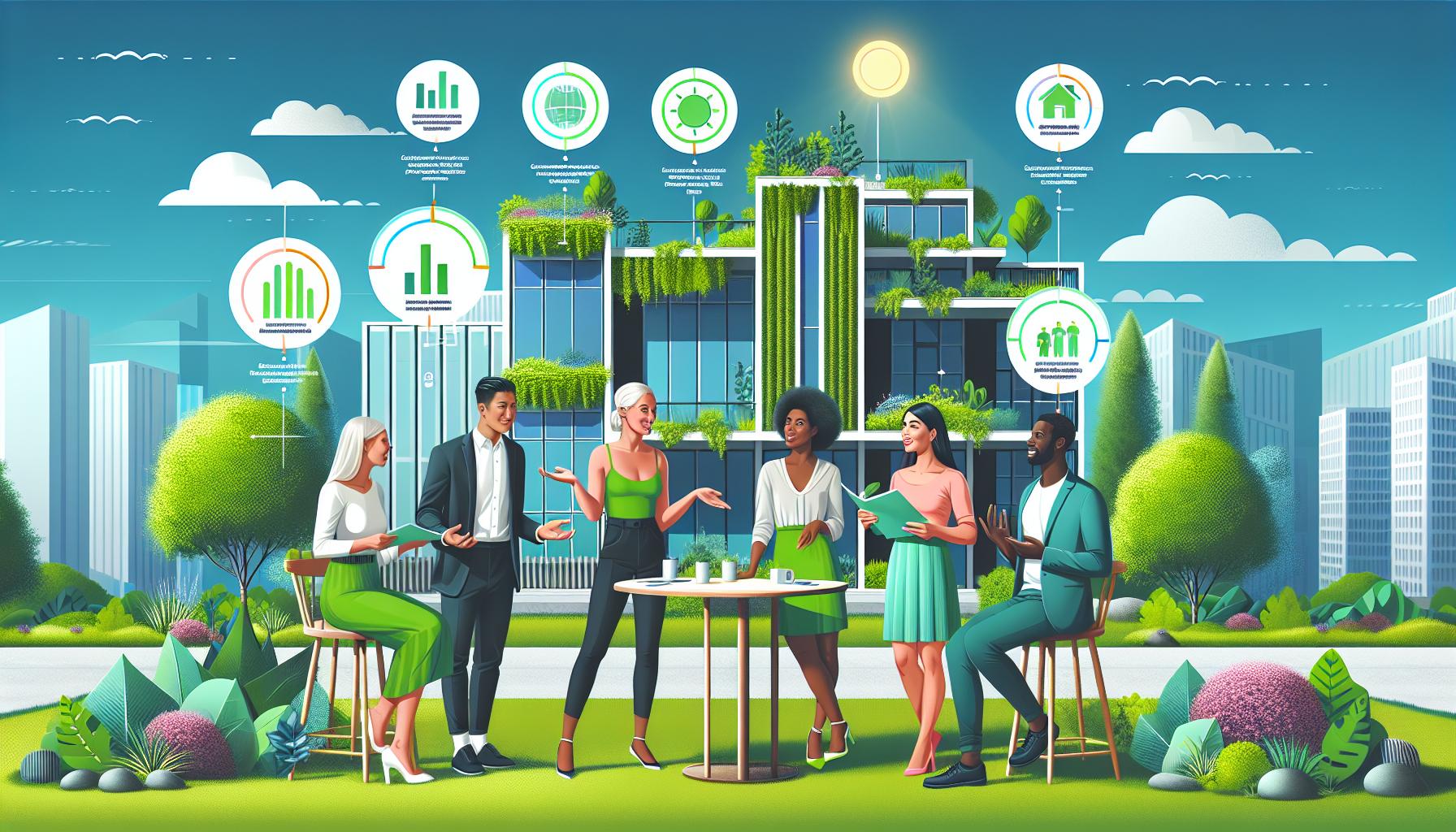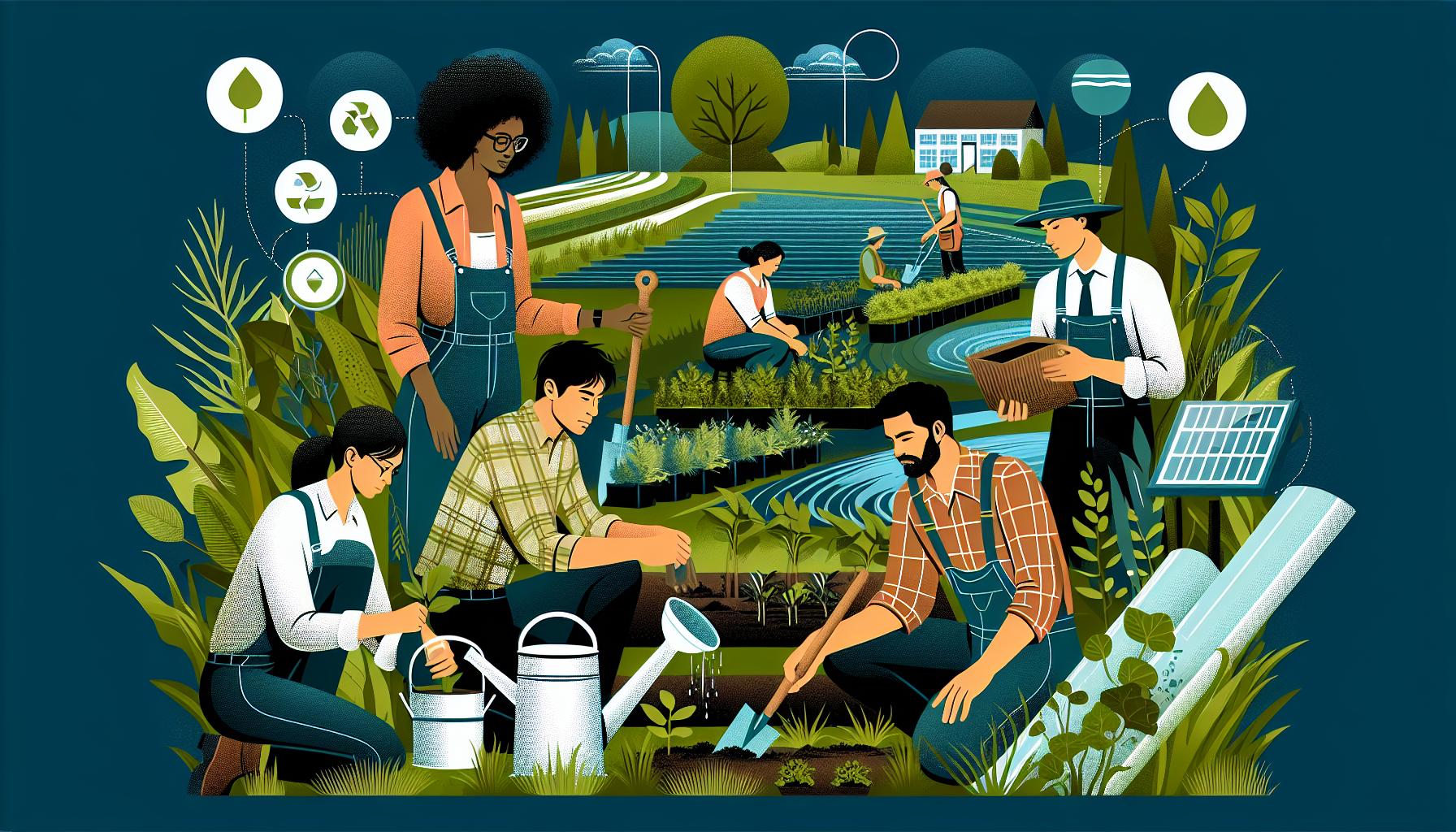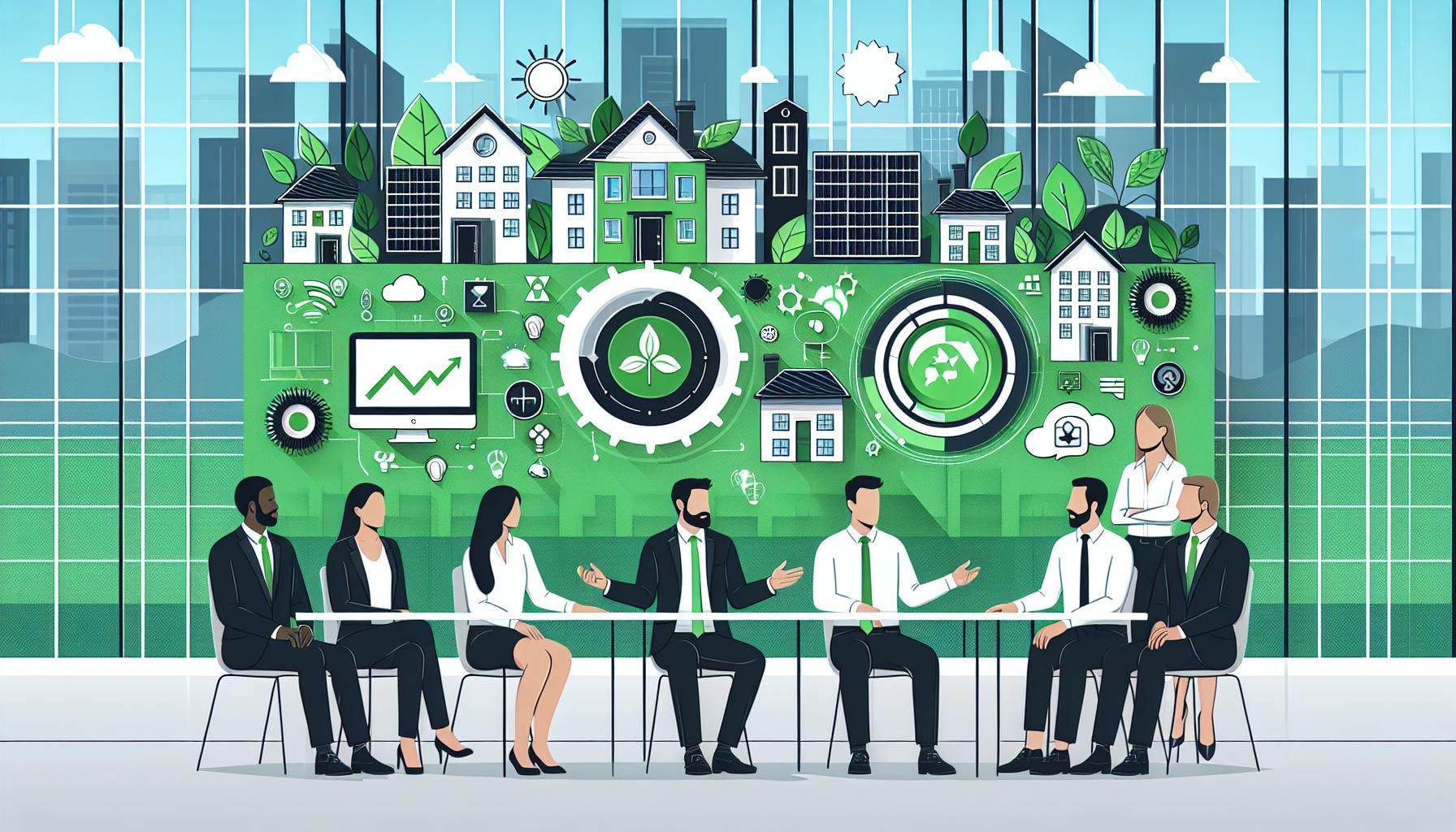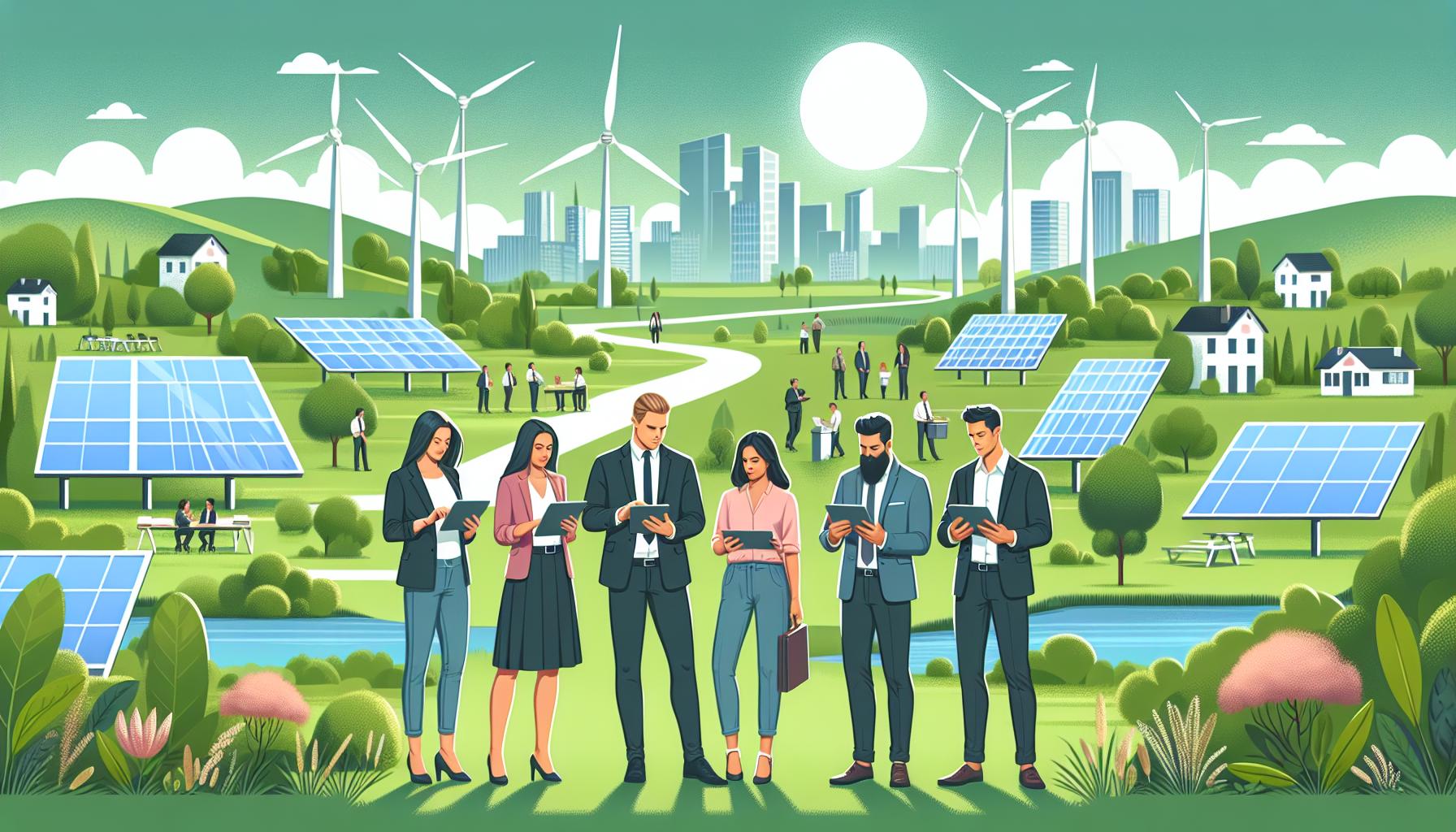Key Takeaways
- Green property management focuses on reducing environmental impact, lowering costs, and improving tenant satisfaction through sustainable practices.
- Energy efficiency upgrades, such as LED lighting, smart thermostats, and improved insulation, can significantly cut energy consumption and operating expenses.
- Water conservation strategies, including low-flow fixtures, rainwater harvesting, and drought-tolerant landscaping, promote resource efficiency and reduce utility bills.
- Effective waste management, such as recycling programs and composting systems, minimizes landfill contributions and fosters tenant involvement in sustainability efforts.
- Eco-friendly measures, like non-toxic materials and improved indoor air quality, enhance tenant health, comfort, and retention while supporting environmental goals.
- Challenges, such as high upfront costs and tenant engagement, can be addressed through government incentives, clear communication, and education on the benefits of sustainability.
Sustainability is no longer just a buzzword—it’s become an essential part of managing properties responsibly. As property managers, we have the opportunity to make choices that reduce environmental impact while creating healthier spaces for tenants. But how do we balance eco-friendly practices with efficiency and cost-effectiveness?
From energy-efficient upgrades to waste reduction strategies, adopting green practices can benefit not just the planet but also property owners and residents. Have you considered how small changes, like improving insulation or using renewable energy, could lead to long-term savings and increased tenant satisfaction?
By focusing on sustainable solutions, we can create properties that are both environmentally conscious and financially rewarding. The question is, what steps can we take today to make a meaningful difference?
Understanding Green Property Management Practices
Green property management focuses on strategies that minimize environmental impact while promoting energy efficiency and sustainability. These practices can include everything from reducing energy and water consumption to incorporating eco-friendly materials in property upgrades. By prioritizing these strategies, I strive to create healthier, more sustainable living and working spaces.
Using energy-efficient systems and appliances is one essential aspect. For example, upgrading to LED lighting, installing programmable thermostats, and utilizing solar panels can significantly lower energy use over time. These measures not only contribute to environmental conservation but also reduce operating costs.
Water conservation is another critical component. Low-flow faucets, dual-flush toilets, and rainwater harvesting systems help save water and decrease utility bills. Small additions like drought-tolerant landscaping can also make a big difference in reducing water demand.
Waste management plays a vital role in green practices. I focus on recycling initiatives, composting systems, and minimizing general waste from properties. Encouraging tenants to participate in such efforts creates a shared sense of responsibility.
Indoor air quality is equally important. Using non-toxic paints, maintaining HVAC systems, and incorporating air-purifying plants improve air quality. This enhances tenant comfort and contributes to healthier indoor environments.
How do energy-efficient improvements or water-saving changes impact your property goals? Exploring these questions helps refine sustainable practices while fostering eco-conscious communities.
Benefits Of Green Property Management

Green property management offers multiple advantages that directly benefit the environment, property owners, and tenants. By integrating sustainable practices, it’s possible to advance both ecological and financial goals.
Environmental Advantages
Sustainable property management contributes significantly to environmental preservation. By reducing energy use through appliances like energy-efficient HVAC systems or renewable energy sources such as solar panels, carbon footprints shrink. Water-saving measures, including rainwater harvesting or low-flow devices, optimize resource consumption and lower overall strain on local supply systems.
Minimizing waste through recycling and composting programs helps decrease landfill contributions. Does implementing eco-friendly materials, like non-toxic paints or recycled construction materials, align with your environmental goals? These practices improve indoor and outdoor spaces for healthier living and foster eco-conscious development.
Cost Savings For Property Owners
Eco-friendly upgrades contribute to lower operational expenses and long-term financial savings. Energy-efficient systems, such as LED lighting or smart thermostats, reduce electricity bills significantly. Water-efficient installations, including dual-flush toilets or drought-resistant landscaping, help mitigate rising utility costs.
Investments in renewable energy, such as solar panels, can lead to tax credits and government incentives in many regions. Operational efficiency minimizes equipment wear over time, reducing maintenance costs. Could sustainable investments potentially increase your property’s value or attract potential buyers?
Enhanced Tenant Satisfaction
Green properties enhance tenant experience by meeting growing preferences for eco-friendly living. Elements like clean air solutions, achieved through air-purifying plants or low-VOC materials, create healthier interiors. Energy-efficient designs lead to greater tenant comfort and savings on utility bills.
Eco-conscious efforts boost tenant retention, as residents often prefer properties reflecting their environmental values. In what ways can improved sustainability elevate tenant well-being and satisfaction? Small enhancements create stronger community ties while attracting and keeping long-term renters.
Key Green Property Management Strategies

Exploring sustainable property practices can help reduce environmental impact and create healthy, cost-effective spaces. What steps can be taken to transform properties into greener environments?
Energy Efficiency Measures
Energy-efficient systems play a crucial role in sustainable management. Installing LED lighting and upgrading to energy-efficient appliances significantly lowers energy consumption. Smart thermostats help optimize heating and cooling, reducing unnecessary usage. Insulation improvements, like sealing windows and doors, prevent heat loss and enhance thermal efficiency. Have you assessed how these upgrades could improve your property’s energy performance?
Water Conservation Techniques
Water-saving strategies benefit both the environment and utility budgets. Low-flow faucets and toilets reduce water usage without compromising performance. Rainwater harvesting systems capture and reuse water for landscaping and other non-potable purposes. Using drought-tolerant plants in outdoor spaces reduces irrigation needs. Could implementing these solutions contribute to more sustainable water use on your property?
Waste Management And Recycling
Effective waste management reduces landfill contributions and promotes environmental responsibility. Introducing recycling programs and designating collection stations encourages tenant participation. Composting organic waste provides additional sustainability benefits by creating nutrient-rich soil. Educating tenants about these initiatives strengthens participation rates. What steps are you taking to minimize waste impact on your property?
Challenges In Implementing Green Practices

Adopting green property management practices offers long-term benefits, but it comes with hurdles that can feel overwhelming at first. Addressing these challenges effectively can pave the way for meaningful changes.
Financial Considerations
Cost often presents the first barrier to implementing green changes. Many property managers face limited budgets, making it difficult to afford upgrades like solar panels, energy-efficient appliances, or building retrofits. Even though these investments reduce expenses over time, the initial outlay can be high, especially for older properties requiring significant updates.
What financing options can help in such scenarios? Government grants, tax credits, or utility rebates offer potential solutions. Researching these opportunities may help ease financial strain while incentivizing sustainability efforts.
Tenant Engagement And Education
Encouraging tenant participation in sustainability efforts can be equally challenging. Even if buildings are upgraded with eco-friendly systems, results depend heavily on occupant habits. Tenants unaware of green practices might not use water-saving fixtures properly or separate recyclables from waste.
How can property managers foster awareness? Clear communication through handbooks, newsletters, or workshops engages tenants and encourages environmental responsibility. Highlighting benefits like reduced utility bills or healthier living spaces can inspire active involvement in these efforts.
Future Trends In Green Property Management

Green property management continues to evolve with advancements in technology and changing consumer preferences. Staying informed about emerging trends helps property managers adopt practices that align with sustainability goals and tenant expectations.
Smart Building Technology
Using smart technologies optimizes energy and water use. Devices like advanced thermostats, automated lighting systems, and IoT-enabled water monitoring tools provide real-time data to reduce waste and improve efficiency.
Renewable Energy Integration
Incorporating onsite renewable energy sources, like solar panels or wind turbines, supports eco-friendly energy production. Innovations in energy storage, such as improved battery systems, make it easier to manage and rely on renewable energy even during low production periods.
Climate Resilience Strategies
Preparing properties to withstand extreme weather reduces potential damages. Elevated flood defenses, drought-resistant landscaping, and heat-reflective materials protect properties while lowering maintenance costs in vulnerable areas.
Sustainable Construction Materials
New materials, like carbon-neutral cement and recycled steel, reduce a building’s carbon footprint during development. Retrofitting existing properties with sustainable materials continues to gain traction as businesses aim to meet environmental goals.
Circular Waste Practices
Adopting circular economic principles promotes waste reduction. Facilities offering repair kiosks, shared spaces for upcycling, and advanced recycling stations represent shifts towards minimizing environmental impact during waste processing and reuse.
Data-Driven Efficiency Measures
Technology-driven insights empower property managers to track, analyze, and adjust sustainability efforts. Platforms aggregating environmental performance data help refine practices, set measurable goals, and achieve certifications like LEED or Energy Star.
Tenant-Focused Eco Initiatives
Enhancing tenant involvement in sustainability fosters stronger community partnerships. Initiatives such as shared gardens, green transportation options, and resource-saving competitions inspire tenants to contribute to the property’s sustainability efforts.
How can technology and innovation further improve the way properties operate? Are there strategies you’d like to explore to make your property more adaptable and eco-friendly?
Conclusion
Adopting green property management practices isn’t just about reducing environmental impact—it’s a smart investment in the future. By embracing sustainable strategies, property managers can create spaces that are not only eco-friendly but also financially efficient and appealing to tenants.
Small, intentional changes can lead to significant results, fostering healthier living environments and stronger community connections. The path to sustainability is an ongoing journey, but every step forward makes a difference. It’s time to rethink traditional property management and embrace the opportunities that green practices bring.
Frequently Asked Questions
1. What is sustainable property management?
Sustainable property management involves implementing eco-friendly practices in property operations to reduce environmental impact, enhance energy efficiency, and promote resource conservation. This includes using energy-efficient systems, water-saving measures, and waste reduction initiatives to create greener, healthier living environments.
2. Why is sustainability important in property management?
Sustainability is important because it minimizes environmental harm, reduces operational costs, and caters to tenants seeking eco-friendly living. It also supports long-term financial savings and helps owners comply with environmental regulations while promoting a healthier and more environmentally conscious community.
3. What are examples of eco-friendly practices in property management?
Examples include installing energy-efficient appliances, using LED lighting, improving building insulation, implementing water-saving fixtures, utilizing renewable energy (like solar panels), and encouraging waste recycling or composting. These practices make properties more sustainable and cost-efficient.
4. How can property managers reduce energy consumption?
Property managers can reduce energy consumption by upgrading to energy-efficient HVAC systems, using LED lights, installing smart thermostats, and utilizing renewable energy sources. Regular energy audits can also help identify additional ways to optimize energy usage.
5. What are the benefits of water conservation in properties?
Water conservation reduces utility bills, preserves natural resources, and contributes to sustainability. Installing low-flow fixtures, rainwater harvesting systems, and IoT-enabled water monitors can help optimize water usage without compromising tenant convenience.
6. How does waste management improve sustainability in properties?
Effective waste management reduces landfill contributions, lowers disposal costs, and supports recycling and composting efforts. Establishing recycling programs and using compost bins help properties align with eco-friendly practices and create less waste.
7. How do sustainable practices enhance tenant satisfaction?
Tenants appreciate greener living environments that lower utility costs and promote health. Features like better air quality, energy-efficient systems, and eco-focused amenities align with tenant preferences for sustainability, fostering retention and community involvement.
8. Can sustainable upgrades generate long-term cost savings?
Yes, sustainable upgrades, such as energy-efficient appliances and renewable energy systems, reduce energy and water expenses over time. Additionally, many eco-friendly investments qualify for tax credits and government incentives, increasing their financial benefits.
9. What role does technology play in green property management?
Technology enhances property sustainability by enabling smarter operations, such as IoT-enabled water monitoring, advanced thermostats, and energy usage tracking. These tools optimize consumption, enhance efficiency, and allow property managers to monitor progress toward eco goals.
10. What are future trends in sustainable property management?
Future trends include the integration of smart building technologies, renewable energy systems, sustainable construction materials, and climate resilience planning. Data-driven strategies and tenant-focused eco initiatives will also shape the future of green property management.
11. How can tenants participate in sustainability initiatives?
Tenants can participate by practicing proper recycling, reducing energy and water use, and supporting community eco-initiatives. Property managers can encourage involvement by providing educational resources and creating programs that promote sustainable living.
12. Are eco-friendly properties more attractive to renters?
Yes, eco-friendly properties attract renters who value sustainability and healthier living. Green features, such as energy savings, better air quality, and environmental responsibility, are increasingly desirable, fostering greater tenant satisfaction and retention.
